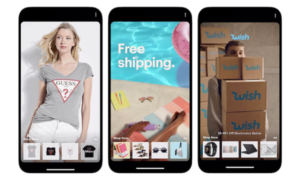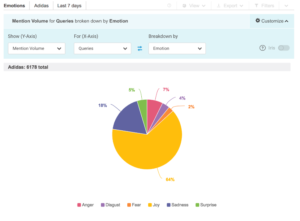In the fast-paced, data-driven world of digital marketing, it’s easy to lose sight of what truly resonates with people—stories. While algorithms and analytics are crucial, storytelling taps into something more human and emotional. In this blog, we’ll explore how storytelling can elevate your brand’s presence and help you forge deeper connections with your audience.
The Timeless Appeal of Storytelling
In today’s era of information overload, traditional advertisements often struggle to break through the noise. This is where storytelling shines. From ancient campfire tales to modern digital narratives, the power of a good story remains timeless. It speaks to our innate human love for narratives, sparking emotional responses that numbers alone can’t achieve.

Studies by Nielsen show that ads with strong emotional resonance see a 23% lift in sales compared to non-emotional ads. That’s the power of storytelling—it connects, engages, and drives action.
Crafting a Compelling Brand Narrative
A powerful brand narrative goes beyond selling products; it tells a story that your audience can relate to. By weaving your brand’s core values into a compelling narrative, you create emotional bonds with your audience.

Brands like Apple and Nike are masters of this, embedding their values into every story they tell. Their narratives evoke emotions, making them memorable and impactful. Whether it’s the underdog’s journey or a tale of transformation, great stories captivate and inspire.
Steps to Build Your Brand Narrative
- Know Your Audience
Start with research. Tools like Google Analytics and customer feedback surveys help you understand your audience’s needs, desires, and pain points. Tailor your brand’s story to address these, ensuring it resonates on a personal level. - Define Your Brand’s Personality
Is your brand adventurous, empowering, or innovative? For example, Red Bull embodies a bold, risk-taking personality, while Dove emphasizes empowerment and self-esteem. A distinct personality gives your brand character and relatability. - Create a Story Arc
Your story needs structure. Build a clear beginning, middle, and end, introducing conflict and guiding your audience through a resolution. This structure keeps them invested in your journey. - Be Consistent Across Platforms
Your story needs structure. From your website to social media and even packaging, consistency in your brand narrative strengthens recognition and reinforces your message.
Choosing the Right Platforms for Storytelling
Your story’s impact depends on where it’s shared. Each digital platform has unique strengths, and tailoring your narrative for these platforms ensures maximum engagement.
Evaluating Different Digital Platforms
Social Media
Platforms like Instagram, Facebook, and LinkedIn provide opportunities for bite-sized storytelling. For instance, Instagram Reels and Facebook stories have some of the highest engagement rates in 2023, making them great spaces to connect with your audience emotionally.
Blogging Platforms
Blogs allow for long-form storytelling. They’re ideal for sharing in-depth insights, building authority, and engaging with readers on a deeper level.
Video Sharing Platforms

Visual storytelling is powerful. YouTube and TikTok have revolutionized how brands tell their stories, particularly among Gen Z. Short-form video content can be especially engaging, driving both emotion and interaction.
Podcasts
Podcasts are perfect for creating intimate connections through storytelling. They allow your audience to engage with your brand while on the go, offering a personal touch.
Visual Storytelling

Snapchat and Instagram Stories are excellent for sharing quick, engaging content that feels personal and authentic. These platforms are ideal for behind-the-scenes glimpses of your brand.
Why Emotional Engagement Matters
Emotional engagement is at the heart of successful storytelling. When your audience sees their own experiences reflected in your brand’s story, they feel a deeper connection. According to research by Google Cloud, 82% of shoppers prefer a consumer brand’s values to align with their own.
A great example is Airbnb’s user-generated storytelling, which turns customers into both protagonists and storytellers, fostering a sense of belonging and loyalty.
Creating Memorable Experiences
Immersive Campaigns
Take your storytelling further with immersive campaigns. Interactive experiences, such as virtual pop-up events or augmented reality (AR), make your audience feel part of the story. Brands like Burberry use AR to enhance engagement, leaving a lasting emotional impact.

Personalization

Personalized marketing makes your audience feel valued. By tailoring content to their preferences, you create a deeper connection. Netflix, for instance, uses AI to recommend content, making users feel understood and keeping them coming back.
Measuring Emotional Engagement

How do you know if your storytelling is hitting the right notes? Emotional engagement goes beyond clicks and conversions—it’s about how your audience feels. Tools like Brandwatch and Sprout Social can track sentiment analysis, offering insights into emotional responses.
Key Metrics to Track:
- Sentiment Analysis: Track the emotions behind social media mentions and comments to gauge how customers feel about your brand.
- Feedback Loops: Use surveys and reviews to gather direct feedback on how your audience connects with your story.
Overcoming Challenges in Storytelling
Storytelling isn’t without its challenges. The biggest hurdle is maintaining authenticity in a crowded market. It’s essential to balance emotional appeal with clear brand messaging. A failure to do so can lead to tone-deaf campaigns, as demonstrated by Pepsi’s controversial 2017 Kendall Jenner ad.
To avoid these pitfalls, always ensure your storytelling remains true to your brand’s identity.
The Future of Storytelling in Digital Marketing
Looking ahead, interactive and immersive storytelling will continue to grow. Technologies like AR, VR, and AI-driven personalization are creating new ways to engage audiences. In the future, brands won’t just tell stories—they’ll invite their audiences to experience them firsthand.
Emerging Trends in Storytelling
- User-Generated Content: Consumers are becoming storytellers themselves. Brands like GoPro encourage users to create content that builds brand narratives.

- Social Commerce: As shopping becomes more integrated with social media, storytelling plays a vital role in creating seamless and enjoyable experiences.

- Evolving Metrics: As storytelling becomes more prominent, metrics like sentiment analysis and engagement rates will become key indicators of success.
Conclusion: The Lasting Impact of Storytelling
Storytelling isn’t just about sharing information; it’s about connecting with your audience on an emotional level. By leveraging the power of storytelling in digital marketing, brands can build loyalty, inspire action, and leave a lasting impression.
At Mavenwit, we specialize in creating compelling narratives that resonate with your audience and drive real results. Our tailored digital marketing strategies focus on emotional engagement, helping brands like yours stand out in today’s crowded market. Ready to take your brand’s storytelling to the next level? Schedule a free consultation today and discover how Mavenwit can help you craft stories that captivate and convert.








